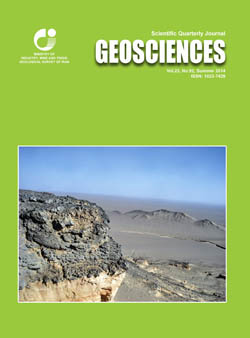Document Type : Original Research Paper
Authors
1 Professor, Sciences Earth of Faculty, Shahrood, Technology of University Shahrood, Iran,
2 M.Sc., Sciences Earth of Faculty, Shahrood, Technology of University Shahrood, Iran,
Abstract
The Gol-e-Zard granitoidic pluton with an age of ~ 165±5 Ma is located in the north of Aligoudarz city, Lorestan province, in the Sanandaj-Sirjan structural zone. The pluton intruded into the late Triassic-early Jurassic slates, phyllites and micaschists. The granodiorites, dominant rock types of the pluton, are cut by the leucogranites, aplitic veins, pegmatites and gabbro-dioritic dykes. The S-type nature of the Gol-e-Zard granite is evidenced by the presence of metaplitic enclaves (surmicaceous and andalusite-sillimanite hornfels), silica enclaves, andalusite and garnet xenocrysts and silica veins relicts. The anisotropy of magnetic susceptibility (AMS) method was used to investigate the mode of emplacement. The total numbers of 868 oriented core samples were analyzed for magnetic susceptibility. The obtained mean susceptibility (Km) in µЅІ was 227, 57 and 585 for granodiorites, leucogranites and gabbrodiorite dykes, respectively. The low Km values (
Keywords

